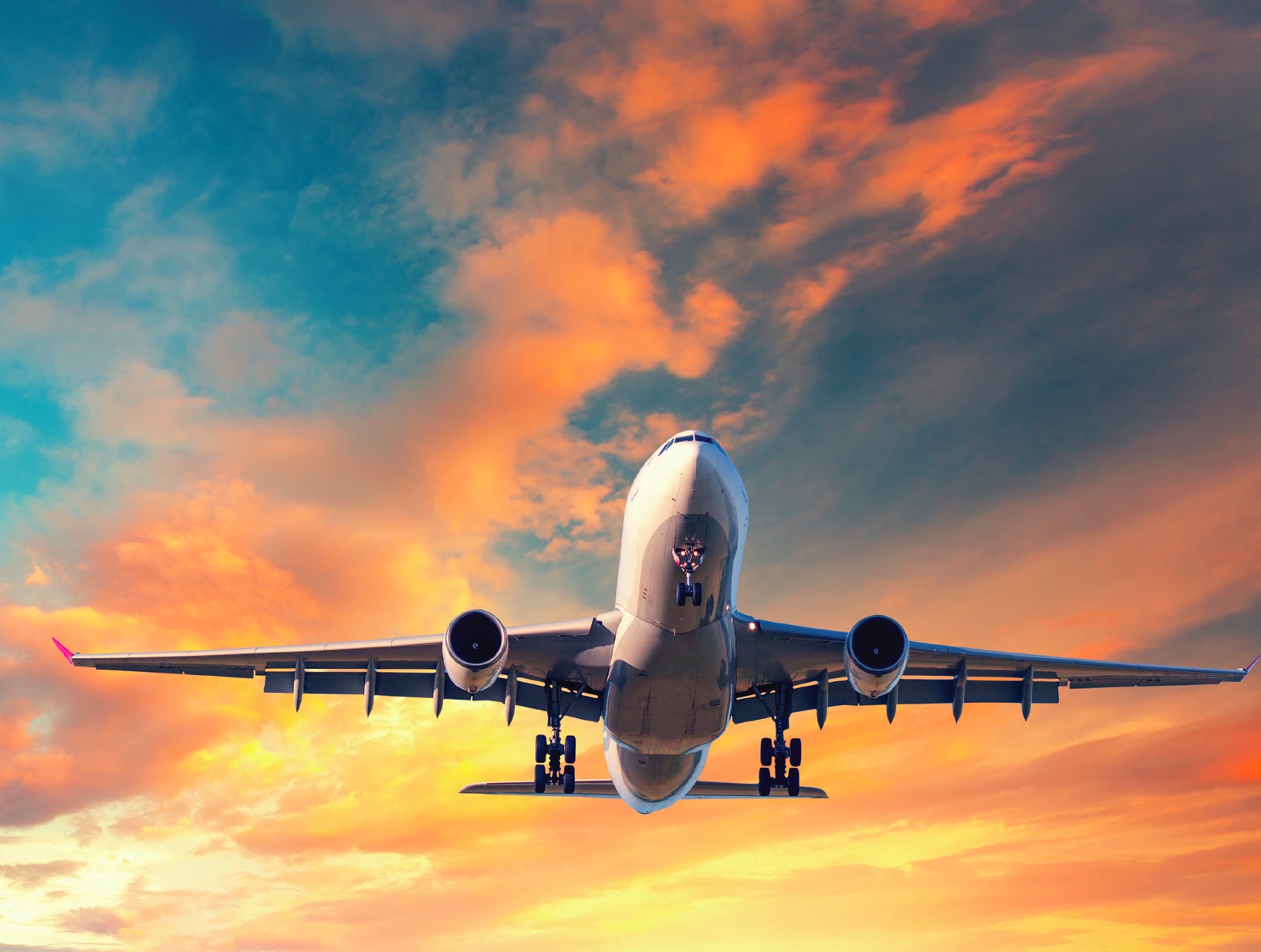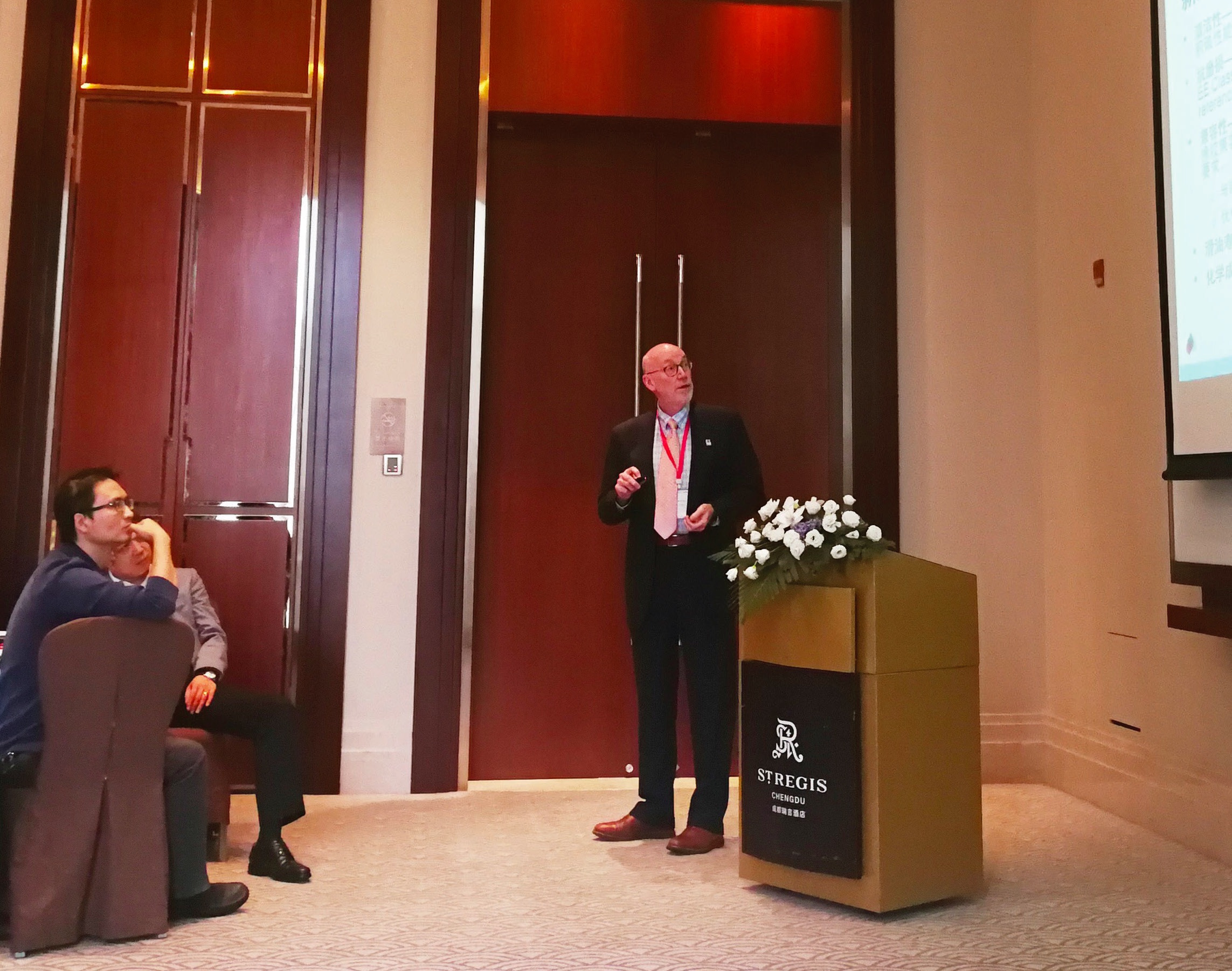TLT: Please describe your job.
Yungk: I often describe my current multidisciplinary role as a “dream job” providing the privilege of interacting with airline mechanics and engineers to understand lubricant performance and its challenges in the real world. This inevitably leads to partnering with aviation engine and other component designers to determine root causes and their solutions. This conduit lays the foundation for collaboration on future design improvements that include expanding the design envelope in an informed manner, developing improved service relevant tests and seeding new design model tools with oil property related parameters.
“Multidisciplinary” is a pivotal word when it comes to lubrication with many aspects needing astute consideration.
Tribology is a key driver for aviation turbine oils, which must fit a very targeted viscosity profile that suits the wide range of operating temperatures that begins at cold starts of -40 C and extends to at least 200 C bulk oil temperature with local hot spots going much higher. An understanding of how pressure-viscosity of these polyolester-based lubricants behaves is essential to predicting bearing film thicknesses, lambda ratios and, hence, bearing life. I recently had the honor of chairing the SAE E-34 subcommittee dedicated to aviation turbine oil tribology matters (E-34C).
Beyond the elastrohydrodynamic (EHD) considerations, the aviation industry is fully cognizant to studies on the impact of formulation on boundary film formation. Triaryl phosphates such as tricresol phosphate commonly are used in aviation turbine oils to improve scuff resistance. The aviation industry currently relies on a high-speed gear test to validate the load carrying capacity of its lubricating oils. This Ryder Gear Machine (FEDSTD-791 Method 6508.2) has served the industry well for the past half century, but the downside is the fact that there is only a single Ryder Gear Machine remaining in operation today with this industry rightfully demanding multiple sourcing in all its resources. The E-34C subcommittee is exploring modern alternatives to this heritage test such as ball-on-disk and other gear machine configurations. During my 30-year tribology journey, I feel fortunate to have been mentored by STLE Life Member Vern Wedeven, Wedeven Associates, and continue to look to him for guidance.
Aviation OEMs have identified micropitting as a potential concern as the industry drives for lower fuel consumption, which, in turn, has pushed all design parameters to extremes including bearing and gear lambda ratios. The E-34C subcommittee is now developing micropitting testing that addresses the materials and conditions specific to aviation.
Aviation industry focus on tribological aspects of aviation engine oils is especially timely as a new mechanical system design concept is being adopted. The use of planetary reduction gearboxes to couple fuel-efficient high-speed core turbines to slower engine fans (or future open rotor propellers) has been announced by all the major western large engine designers. These planetary reduction gearboxes need to be low in weight and mechanically efficient, which presents tribology challenges in load and slide-to-roll ratios outside of aviation design experience.
Aviation turbine oils not only have to satisfy the tribological needs of a jet engine. A major role for the oil is to provide heat transfer capability in the critical heat management system of the engine. Given the fact that a jet engine can operate with turbine temperatures approaching 1,500 C mere centimeters away from the oil, the oil needs to be both thermally and oxidatively stable. This is especially important when one considers that aviation engine maintenance schedules do not call for a change in oil akin to a car engine, but rather oil condition is effectively maintained by nightly top offs of about 1% of the oil reservoir’s volume lost overboard during normal operation. A big challenge is avoidance of solid deposits that can limit or block the flow of oil to the bearing. If a blockage should occur, the internal radial clearance can quickly diminish to the point of bearing seizure. An engine failure of this nature has safety implications, leading to very expensive collateral damage along with the inconvenience to passengers if the aircraft needs to divert to an alternate location due to engine shutdown.
In a large part to address the serious safety implications due to oil system deposits, a commercial aviation oil specification was developed during the early 2000s during my time as chair of the SAE E-34 committee. This SAE AS5780 aviation turbine oil specification has evolved over time to incorporate both standard (SPC) and high performance (HPC) classes recognizing the need for the more thermally stable HPC fluids for modern engine design.
 TLT: What has been one rewarding experience throughout your career in the industry?
TLT: What has been one rewarding experience throughout your career in the industry?
Yungk: It was an extremely rewarding experience to work with my peers at competing engine manufacturers across the globe as well as many aviation regulatory authorities to institute such a well-conceived and robust oil specification. The SAE AS5780 specification now embedded within the design community also facilitates a traceable management of change process to validate new raw materials used in fixed qualified oil formulations.
While AS5780 addresses commercial aviation needs, it also has been very satisfying to work with the various U.S. specialists such as the Naval Air Systems Command, Air Force Research Laboratory and the Army Research Laboratory as they manage influential aviation lubricant specifications, solve operational issues in the most arduous circumstances and spearhead the development of future aircraft systems for use in the military arena.
Tribology properties and thermal stability certainly are critical for a successful turbine oil, but it’s also important to remember that jet engines are on-wing for up to 40,000 operating hours between shop visits at which time components can be repaired or replaced. To this end, aviation turbine oils need to be compatible with all materials that the oil touches. This is especially important for polymer materials such as oil seals and organic matrix composite materials that are being used in the drive toward lower weight engine systems. The SAE standard long duration, moderate temperature oil/material compatibility test, which I helped to establish, is guiding new HPC oil development with improved compatibility toward older O-ring seal materials while also demonstrating the value of the improved modern O-ring seal materials now being incorporated in new engine types.
 Ron Yungk teaching a class in aviation lubrication to airline propulsion engineers in Chengdu, China.
TLT: What are some of the technical concepts or topics that you’ve worked on recently?
Ron Yungk teaching a class in aviation lubrication to airline propulsion engineers in Chengdu, China.
TLT: What are some of the technical concepts or topics that you’ve worked on recently?
Yungk: In recent years, there has been an increased interest in the air quality in aircraft cabins, especially amongst the flight and cabin crew who spend their working lives at altitude. There are many organizations studying the science behind how various aviation fluids can be ingested into or expelled from aircraft engines and how these fluids migrate from the air bleed from the engines into the aircraft environmental control system (think air conditioner) into the aircraft cabin and flight deck. It is rewarding to be able to collaborate with the various research institutes, aviation regulators, academics and industry standards bodies to study the subject of cabin air quality. This industry activity is focused on developing practical and effective solutions that can be brought to fruition including, for example, cabin air quality sensors, full engine bleed air flow filtration and purposeful aviation crew health monitoring.
The COVID-19 pandemic greatly impacted the aviation industry in 2020, when as many as 10,000 commercial aircrafts were put into storage. A key consideration in preserving engines and other oil wetted components was mitigating the risk of corrosion to highly loaded bearings. Corrosion pits become critical flaws that can lead to bearing failure. Our team worked with airlines to propose science-based improvements to the preservation process and generate the substantiating data for equipment manufacturers needed to revise maintenance processes. These efforts allowed airlines to minimize manpower, materials and environmental waste.
TLT: What is one thing you’d like to share with someone starting a career in the industry?
Yungk: As I look at my career in aviation, I see a benefit from having developed an appreciation and understanding for materials science early on. While today I may spend most of my time dealing with engineering problems, I find myself constantly looking back to my formative science perspective to find solutions. At the same time, I especially appreciate the many colleagues I have come to know and respect across the aviation industry; if you are ever lucky enough to work in this industry, I think you will find a level of camaraderie and sharing unlike any other.
You can reach Ron Yungk at ryungk@eastman.com.